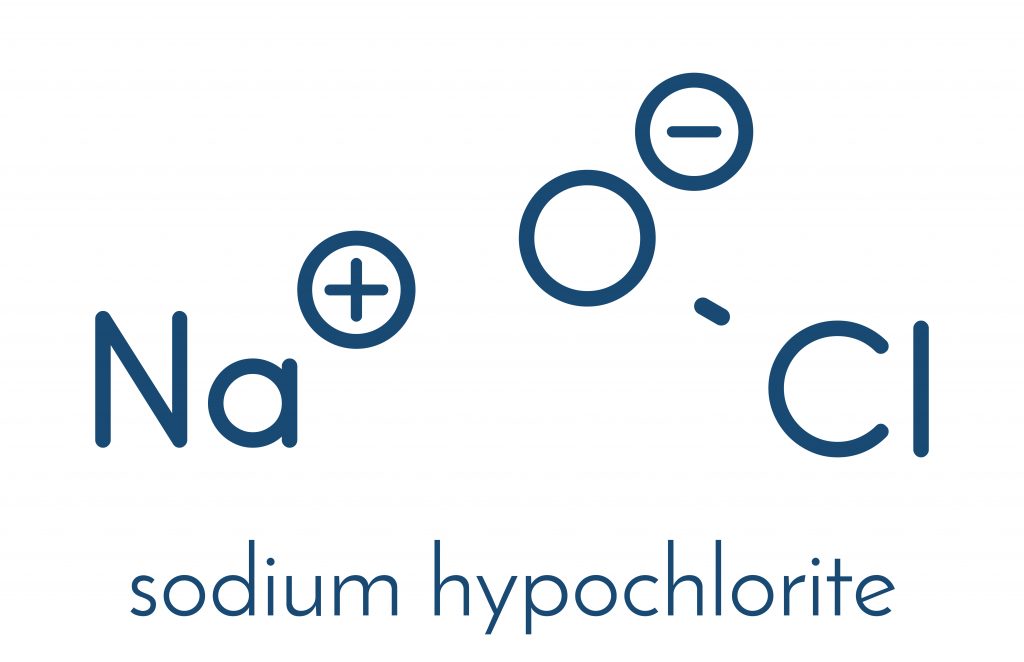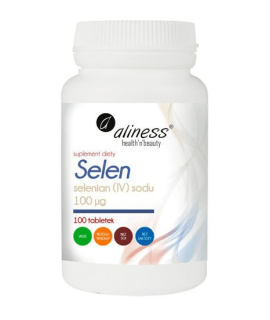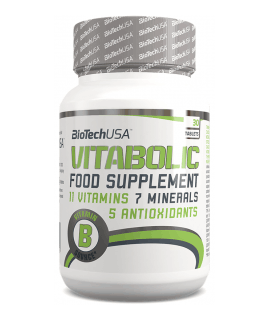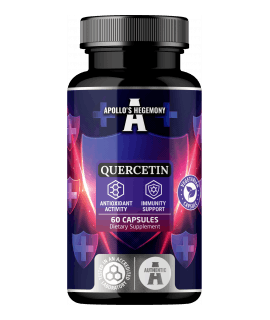Sodium hypochlorite is an inorganic compound, the sodium salt of hypochlorous acid belonging to the category of alkali and chlorine derivatives. Its chemical name is sodium hypochlorite (I). The sodium hypochlorite formula is in the form of NaOCl. It is obtained by saturating an aqueous solution of sodium hydroxide, i.e. NaOH and alkali metals with chlorine. In its pure form, the compound is very unstable, so it is used in the form of an aqueous solution and only this is commercially available.
Sodium hypochlorite solution
An aqueous solution of sodium hypochlorite has a straw or yellow-green colour and a sharp, easily recognizable chlorine smell. The properties of sodium hypochlorite include corrosive, oxidizing, bactericidal and antiseptic properties. It acts as a whitening, cleaning and biocide agent, is a component of disinfectant preparations and raw material and intermediate product for chemical synthesis. Sodium hypochlorite is a dangerous substance. Concentrated has a corrosive effect and is dangerous for the environment. This compound can be bought in industrial chemistry stores, but it is sold only to specialized companies.
Sodium hypochlorite - application
Sodium hypochlorite is mainly used where bleaching, antiseptic and disinfecting effects are required. It is used in
- production of household chemistry
- bleaching agents in the textile paper industry
- disinfection of drinking water
- cleaning of domestic and industrial waste
- disinfection of systems, pipelines and tanks in the dairy industry
- cleaning of beer and wine production facilities
- fungicidal and bactericidal treatment of grain, fruit and vegetables
- disinfection of technical rooms
- modified starch production
- industrial organic synthesis

Sodium hypochlorite for water disinfection
Treatment of process water and disinfection of drinking water with sodium hypochlorite is one of its main applications. The biocidal action of sodium hypochlorite allows it to remove fungi and pathogenic bacteria, including Escherichia coli, which in specific conditions causes poisoning of the digestive tract.
Disinfection of the water with sodium hypochlorite is very common. The smell of chlorine so typical of swimming pools and water parks comes from the sodium hypochlorite used there for disinfection of water. The substance is used both in water parks, sports pools and SPA salons.
Sodium hypochlorite in food production
Sodium hypochlorite in horticulture is commonly used in the cultivation of fruit trees and vines. It is used to prevent diseases of fruit trees. How to use sodium hypochlorite as a fungicide? It is sprayed with a 3% solution in spring when the trees are not yet covered with leaves. This is a very effective method of preventing and treating cancer of fruit trees.
Sodium hypochlorite - is it harmful?
Sodium hypochlorite used as a concentrated solution is very dangerous because it has a corrosive effect. It causes damage to the tissues with which it comes into contact - skin, eyes, mucous membranes, internal organs. When using the solution, it is necessary to wear protective clothing, gloves and glasses. Sodium hypochlorite fumes also have an irritating effect.
Sodium hypochlorite in food can be harmful to people who are allergic or hypersensitive to chlorine. Side effects associated with its use on the skin include redness, itching and burning. The dosage of sodium hypochlorite for washing fruit and vegetables is chosen so as to completely prevent poisoning. The effects of ingestion and contact with sodium hypochlorite during pregnancy and breastfeeding have not been studied. Pregnant and lactating women should avoid this substance at any cost.









